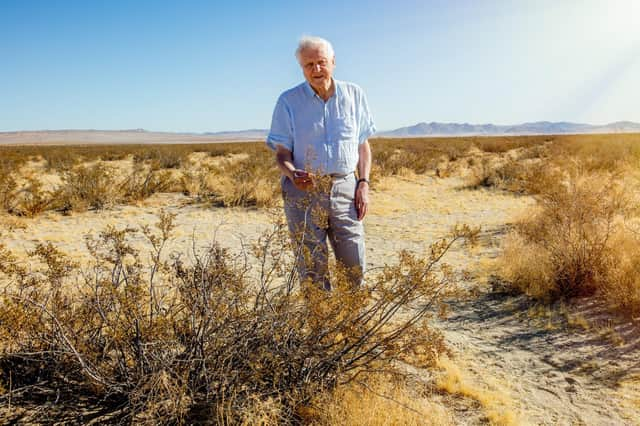Sir David is back with The Green Planet


(BBC1, 7pm)
He may have turned 95 last year, but David Attenborough is still one of Britain’s hardest-working broadcasters.
Over Christmas, BBC One brought us two new documentaries, Attenborough and the Mammoth Graveyard and Attenborough’s Wonder of Song.
Advertisement
Hide AdAdvertisement
Hide AdThe new series The Green Planet may not have his name in the title, but Attenborough is at the heart of it, as he takes a closer look at the world of plants.
If that initially sounds a little like watching the grass grow, then this show is here to prove that plants’ lives are much more dramatic than many of us imagined. Like animals, they are locked in life-and-death struggles for food, battling to preserve their territory and desperate to reproduce.
It’s also something of a passion project for the presenter. Not only does it allow us to see how our understanding of flora has advanced since his pioneering series The Private Life of Plants aired in 1995, it also shows off some impressive new film-making techniques, including thermal cameras, macro frame-stacking and motion-control robotics systems.
It’s also a reminder of just what we stand to lose if our ‘green planet’ is allowed to collapse.
Advertisement
Hide AdAdvertisement
Hide AdAttenborough says: “This is a wonderful opportunity to explore a neglected yet truly remarkable part of the natural world. Once again, the innovative approach of the BBC Natural History Unit and groundbreaking technology will reveal new and surprising wonders to the BBC One audience.”
The presenter will be travelling the world over the course of the series, from deserts to the frozen north. However, the first episode finds him exploring tropical forests, where more types of plants are crammed together than anywhere else on Earth. At first glance, it’s beautiful, but look closer and you’ll see a battleground.
Most of the plants live high in the canopy, where an almost infinite variety of flowers compete for the attention of hummingbirds and insects.
Attenborough finds out how plants fight for their place in the light, including the South American balsa tree, which sacrifices strength in favour of a fast-growing brittle wood and can shoot up by several metres a year.
Advertisement
Hide AdAdvertisement
Hide AdIt also has a head start when it comes to reproduction, using huge flowers brimming with nectar to attract animal pollinators. However, the parasitic corpse flower uses a different approach – as the name suggests, it mimics a dead animal’s smell and even teeth and hair to bring the flies flocking.
Attenborough also explores the different methods that species use to discourage leaf-eaters, and finds out how tropical forests are able to create their own weather.
As you might expect, there is also a look at how these incredible, diverse areas are coming under threat, especially as they are chopped into ever-smaller fragments.
Yet the situation isn’t as bleak as you might expect, as in addition to everything else that is amazing about them, plants are also resilient, and left to its own devices tropical forests can recover.
Attenborough learns how grazing land in Costa Rica has been left to regrow and, in just 20 years, has become a forest again.